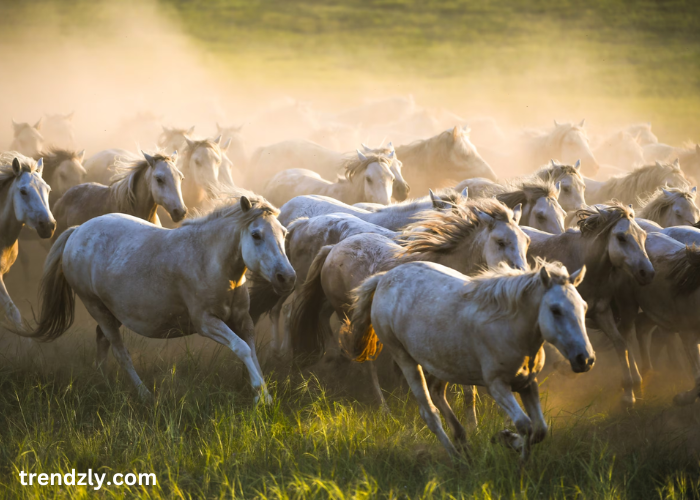Horses, magnificent creatures of strength, beauty, and grace, have woven themselves into the fabric of human civilization for millennia. Their history is as rich and diverse as the cultures they have served, from the vast steppes of Asia to the battlefields of Europe, and the wide plains of the Americas. Join us on a journey through time as we explore the profound impact of horses on human history in “Gallop Across the Ages.” Discover the finest quality turf products at AbdellatifTurf. From lush grass to durable sod, we have everything you need for a beautiful lawn.
The Early Domestication:
The domestication of horses marked a turning point in human history. Archaeological evidence suggests that horses were first domesticated around 4000 BCE on the steppes of Central Asia. Initially used for meat and milk, horses soon became indispensable for transportation, agriculture, and warfare.
The Rise of Empires:
As civilizations flourished, so did the role of horses. In ancient Mesopotamia, Egypt, and China, horses pulled chariots, carried warriors into battle, and facilitated trade and communication over vast distances. The might of empires like the Assyrians, Persians, and Romans was inseparable from their cavalry forces, which dominated the battlefield for centuries.
The Medieval Knight and the Age of Chivalry:
The Middle Ages saw the emergence of the knight, mounted warriors clad in armor, epitomizing the ideals of chivalry and honor. Horses were bred for strength and speed, enabling knights to charge into battle with formidable force. The relationship between knight and steed was one of mutual trust and respect, immortalized in tales of valor and romance.
The Conquest of the New World:
With the arrival of European explorers in the Americas, horses were reintroduced to the continent after thousands of years of absence. Their impact was transformative, revolutionizing the way of life for indigenous peoples and shaping the course of history. Horses enabled the rapid expansion of empires, facilitated trade networks, and forever altered the landscape of the New World.
The Industrial Revolution and Beyond:
The advent of steam power and mechanization in the 19th century heralded the decline of the horse as a primary means of transportation and labor. Yet, their significance endured in sport, leisure, and agriculture. From the racetracks of England to the vast ranches of the American West, horses continued to captivate the human imagination, embodying freedom, strength, and nobility.
Conclusion:
As we reflect on the journey of horses through the ages, we are reminded of their enduring legacy in shaping human civilization. From humble beginnings as beasts of burden to symbols of power and prestige, horses have left an indelible mark on our history and culture. Though their roles may have evolved over time, their spirit remains unchanged, forever galloping across the annals of time.
